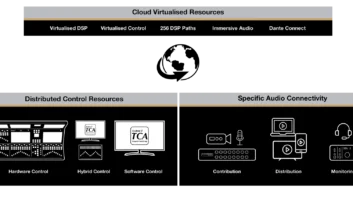Over the past decade, the choice for sports fans has increased significantly. There has been an explosion in on-demand viewing, expanding consumer’s interest outside of the usual mainstream schedules. New audiences are beginning to engage with a wider variety of sports for the first time, and there are an increasing number of platforms available on which to enjoy those matches and events. But while the different types of sport that viewers can access are diversifying, there are still challenges for gender diversity within sports broadcasting.
There has been a disparity between male and female sports coverage for some time, both in terms of quality and volume. This means that outside of key events such as the Olympics, female athletes often don’t get proper access to the spotlight. A lack of visibility means that women miss out on vital advertising and sponsorship opportunities that are more readily available to male athletes. If women’s and men’s matches aren’t treated equally, then it is crucial to not only raise awareness of the roadblocks to gender equality in sports media, but also take more innovative steps to improve the situation.
An Evolving Landscape
In 2018 UNESCO called for fairer media coverage for sportswomen. “The fight for equality between women and men is central to our work,” said UNESCO director-deneral Audrey Azoulay. “Only 4 per cent of sports media content is dedicated to women’s sport.”
Fortunately, since then, the situation has slowly started to evolve, the Women’s Sport Trust (WST) revealed that 2021 was a record-breaking year for women’s sport in the UK. “Almost 33 million (32.9m) people watched domestic women’s sport in 2021, beating all previous years. The main drivers for this growth were The Hundred and the FA Women’s Super League which brought in almost 11 million new viewers to women’s sport. 5.9 million new viewers to the WSL had not watched any other women’s sport in 2021 prior to the start of the season. Of the 4.9m new viewers to The Hundred, 3.5m (71%) have gone on to watch other women’s sports, with football and tennis the most popular choices.”
Better Visibility = Better Engagement
There are still significant roadblocks in society that prevent female athletes from enjoying the attention they deserve, however, I would argue that the best route to proving popularity lies in improving access. As demonstrated by these 2021 statistics, there is clearly an audience with an appetite for more coverage of women’s matches. In the UK, organisations such as the Women’s Sports Alliance are working hard to improve visibility of events, with a calendar of upcoming women’s sports content for 2022.
Beyond professional teams, there have also been successful steps taken to generate interest in sports participation. Campaigns such as Sport England’s This Girl Can are working to empower women and girls, with better access to recreational sport, offering opportunities to connect with local clubs and try a wide variety of activities. The charity Women in Sport is also working to influence sports, schools and policy makers to ensure sport is open to all women and girls, raising the issue that “nearly 60% of girls aren’t meeting recommended exercise guidelines.”
It’s clear that campaign groups are highlighting the need for an increase in engagement with women’s sport, both in the professional and personal spheres. Women’s sport is certainly gaining commercial momentum and the more it is televised, the more viewers can take advantage of the opportunity to enjoy it. Sports fans are clearly open to watching more women’s games, but this cannot be limited to a few top-flight teams or superstar athletes. So what steps are being taken by the broadcasting industry, to improve coverage for those women that put in the thousands of hours of training necessary, to excel on the field?
The Cost of Sports Content Delivery
Even for men’s clubs that have better financial backing than their female counterparts, traditional broadcasting carries a significant price-tag. If the live event is classed as tier one and the content is extremely high value, the cost implications of using traditional methods such as fibre and satellite will be less of a consideration for content owners. The rights to the match or series of events, will have been sold to multiple takers and advertising revenue will be guaranteed. In this instance, delivering a main feed and distributing it to a large number of takers isn’t a financial barrier.
However, for second or third tier teams, or for more niche sports, traditional methods can completely price organisations out of sharing matches with fans. For women’s sports organisations, these challenges are magnified even further, with an ongoing struggle for access to content coverage opportunities.
Improving the accessibility of broadcast opportunities, is a key driver for maximising engagement and growing audiences in both domestic and new regions. Until recently the cost of delivering content has been prohibitive for many women’s sports organisations, but with the development of cloud-based content delivery, there is the potential to rethink the traditional broadcast chain and achieve better reach, more cost-effectively.
The IP Effect
New developments in IP delivery mean that broadcast-grade feeds can now be moved from any location to any destination, at a fraction of the cost of traditional methods. Content owners can transport live linear and OTT content from point-to-point or point to multipoint, using protocols that ensure reliability and quality, without expensive infrastructure.
Certain events and supplementary sports content have been delivered over IP for some time now. However, those feeds have mainly been transported using the streaming protocol RTMP, with content delivered directly to websites. Although the feeds are transported via a Content Delivery Network (CDN) of some sort, the ability to customise the content with graphics insertion or adapt it to the needs of specific regions has been extremely limited. Because of this, content owners haven’t been able to maximise the fans’ experience through professional broadcast platforms. Web streaming via RTMP is not comparable to delivering a high quality, broadcast-grade feed to takers, that can then be leveraged across those platforms to attract new audiences.
A more premium and personalised experience for women’s sports fans, across a full package of event content that could be cost-effectively distributed to takers, would be an absolute game changer at every level of sport. An IP model is the only approach that allows for affordable, broadcast-grade content delivery and offers an increase in viewing options for global audiences. Women’s sport deserves better recognition and pathways to coverage. I believe that it is the broadcasting industry’s responsibility to facilitate this.
We are moving into a cloud-based future of broadcasting. Let’s bring audiences more content choice, more content volume, and most importantly – more content equality.






